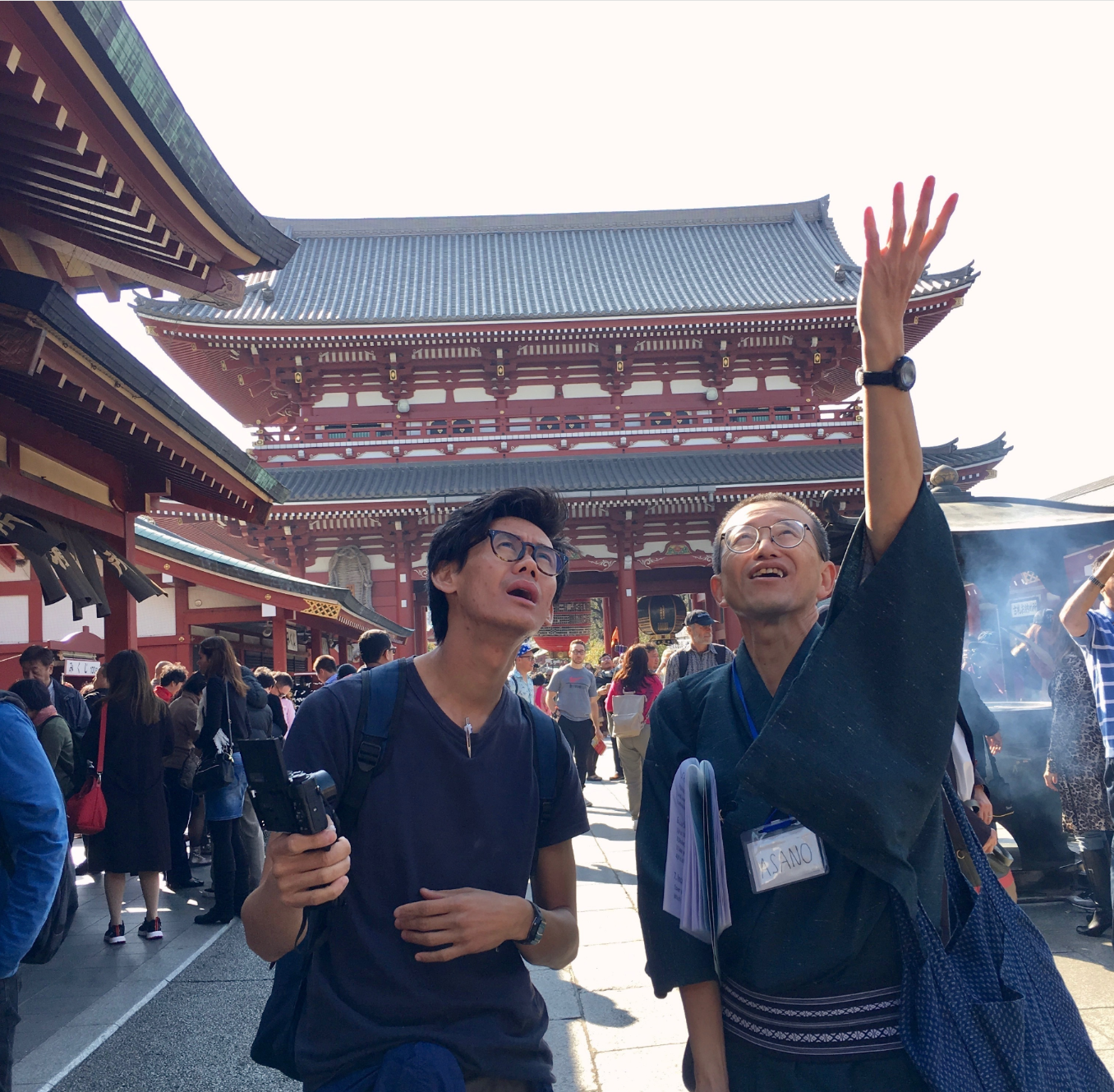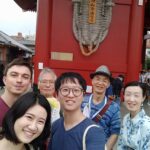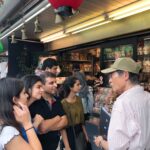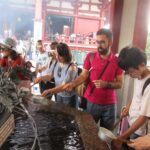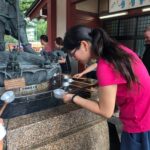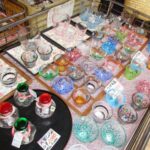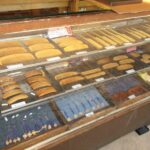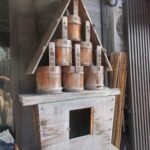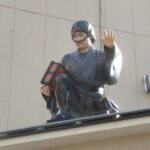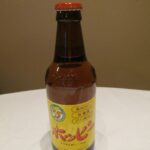A big thank you to all who participated in our tours in Asakusa on August 12. We welcomed eleven guests from UK, Spain, Germany, Taiwan and Australia. It was muggy weather but not too bad. Fortunately typhoon Shanshan had gone away by the time of our tours. I hope all of you enjoyed walking with us.
The main approach to Sensoji Temple, Nakamise Street is famous, but crossing Denpoin Street has a different atmosphere and maintains the old-time ambience of Edo(currently Tokyo) with the variety of special shops and interesting figures. The name of the street is derived from Denpoin Temple along the street. The temple is the living quarters of the priest and training place in the pretty garden which is normally closed to the public.
The street is just 200 meters long and lined with little shops of the elaborately crafted products such as Edo kiriko, Kanzashi hair accessory and tenugui cloth which are passed down from the Edo period(1603-1868). Edo kiriko are a unique type of cut glass. The clear colors and delicate patterns are artistic. Kanzashi are hair ornament used in traditional Japanese hairstyles. Furthermore, Tenugui are a type of towel with the sense of the seasons. They can be used in various ways such as drying hands, a mat or for a display. These products may be suitable as a souvenir from Asakusa.
It is amazing that the street has full of remnants from the pre-modern period. For example Hansho Bell, a watch tower to look out for fires and strike the bell at that time and tensui-oke, rainwater tank for extinguishing fires. Edo was susceptible to fires, since the buildings were mostly woods and stood very close each other. The Sensoji Temple main hall was destroyed by fires several times. For this reason Tensui-oke are seen elsewhere in the temple precincts as a lesson. These remains are not too conspicuous and easily missed. You have to look very closely to see it.
In addition, there are six outstanding thief characters somewhere on the street. One is a sneaky Nezumi Kozo(literally rat man) modelling a legendary thief and hero who lived in Edo. Nezumi kozo is famous for stealing money from the evil rich and helping the poor. The others are five master thieves and their stories were made into kabuki plays. The principal figure is standing on the street. Most of the figures are not the level of your eyesight, so look up. It may be a fun for visitors to look for the other four thieves.
Finally, your tour will end up with food and drinks at the extended Hoppy Street. There are plenty of izakaya(tavern) restaurants. Hoppy Street is a common name and came from ‘hoppy’, a low alcoholic-flavored beverage(0.8%) which was traditionally popular, since beer was too expensive after WW2. Now people are drinking hoppy mixed with shochu,clear distilled liquor(25%). Drink hoppy at Hoppy Street and become happy!!!
We are delighted to show you the lovely part of Asakusa including Sensoji Temple and look forward to seeing you then.
(posted by Yoshi)

